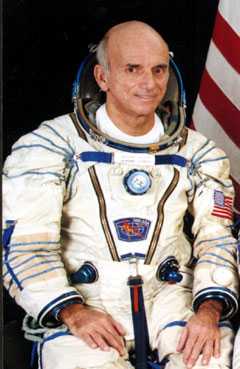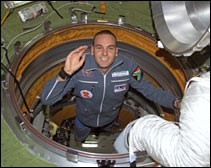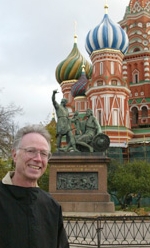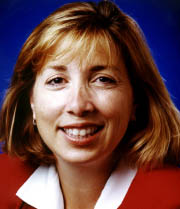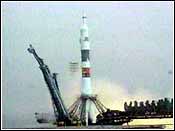| SPACE TODAY ONLINE COVERING SPACE FROM EARTH TO THE EDGE OF THE UNIVERSE | ||||||||||
| COVER | SOLAR SYSTEM | DEEP SPACE | SHUTTLES | STATIONS | ASTRONAUTS | SATELLITES | ROCKETS | HISTORY | GLOBAL LINKS | SEARCH |
$20 million buys a sightseeing trip in orbit...
Tourists Visit the International Space Station
First Tourist Second Tourist Third Tourist
Dennis Tito
[click to enlarge]
Mark Shuttleworth
[click to enlarge]
Greg Olsen
[click to enlarge]
Lance Bass
Cindy Crawford
[click to enlarge]
Lori Garver
[click to enlarge]
Space tourism comes closer to liftoff
USA Today, April 27, 2011
The notion of an ordinary person taking a trip beyond Earth's atmosphere is no longer the stuff of science fiction. Several already have gone, and hundreds more have paid for trips soon.
click to read the story »
After the collapse of the old Soviet Union, the Russian space agency was strapped for hard cash to pay its bills. To raise funds, it decided to send individual persons with only limited training to space in return for millions of dollars. The hotel in space where tourists would stay for a few days would be the International Space Station (ISS) 250 miles above Earth.
As the main contributor to the 16-nation consortium building the ISS, the United States objected at first to tourist flights to the multi-billion dollar outpost. The U.S. argued that persons flying without much training and lacking multilingual language skills would endanger the flight and the space station. Russia, which controls the Soyuz transport capsule flights, countered that tourists would train for months with real cosmonauts and would be prepared for spaceflight.
Eventually, the United States gave up its argument and tourist flights began in 2001. NASA does require the tourists to sign a legal document pledging that they and their heirs will not sue the space agency if anything goes wrong. The tourists also must agree to pay for anything they break.
After shuttle Columbia was destroyed while returning from orbit on February 1, 2003, the Russian government postponed plans to send more tourists into space while NASA investigated the disaster.The Russians have said they are holding seats for Space Adventures customers on four Soyuz flights to the ISS through 2007. Meanwhile, in July 2005 the U.S. space shuttle fleet resumed flights when Discovery flew to the station. However, further shuttle flights have been delayed by problems that cropped up during the 2005 flight.
- Russian Soyuz transports and Progress freighters have ferried crews and cargo to the space station since the Columbia disaster.
- In 2003, Russian officials said they would send two space tourists to the International Space Station in 2004-2005. The Russian space agency Rosaviakosmos hired Space Adventures Ltd. of Arlington, Virginia, to locate persons willing and able to pay $20 million each for ten-day flights.
- In 2004, the Russians announced that New Jersey businessman Gregory Olsen would become the third space tourist in April 2005. However, Russian physicians later postponed Olsen's trip to the ISS due to health concerns. Olsen eventually was approved in July 2005 and launched aboard a Soyuz transport craft in October 2005 to become the third private person to pay for a ride to the International Space Station.
California millionaire investment fund manager and onetime NASA rocket scientist Dennis Tito, 60, was the first private space tourist selected by Russian space officials for a visit to the ISS. He paid $20 million for a ride up to Earth orbit aboard a Soyuz craft for a 10-day round trip excursion. Tito trained at the cosmonaut center near Moscow and then was blasted off in April 2001 from a launchpad Russia maintains at its Baikonur Cosmodrome in the independent Asian nation of Kazakhstan.
South African Internet tycoon Mark Shuttleworth, 28, was the second private tourist selected by Russian space officials for an excursion to the ISS. Shuttleworth had made his fortune by starting an Internet security firm in his parents' garage and selling it four years later for more than $500 million. He was blasted off from Baikonur Cosmodrome aboard a Russian Soyuz space capsule in April 2002 to become the first African in space. Shuttleworth reportedly paid some $20 million for his eight-day stay aboard the space station. He bought his spacesuit after the flight and wanted to buy the Soyuz capsule. Shuttleworth considered his flight a working vacation, devoting time to AIDs and stem cell research. During a ham radio contact with followers on the ground, he chatted with former South African president Nelson Mandela and turned down a 14-year-old South African girl who asked if he would marry her.
New Jersey businessman and scientist Gregory Olsen, 60, was the third space tourist. He paid $20 million for a Soyuz ride on the 10-day excursion. Olsen was selected by Russian space officials in 2004 and began practicing the Russian language, running, lifting weights, swimming, learning about the Soyuz and ISS equipment, and training for emergency safety at Russia's Yuri Gagarin Cosmonaut Training Center in Star City outside Moscow. Unfortunately, Russian physicians later postponed Olsen's trip to the ISS due to health concerns related to the high G-forces in spaceflight. Olsen eventually was approved in July 2005 and was launched October 1, 2005, from Baikonur Cosmodrome on the Kazakhstan steppe aboard the Soyuz TMA-7 transport craft to become the third private person to pay for a ride to the International Space Station. With Olsen aboard TMA-7 were the ISS Expedition 12 crew, cosmonaut Valery Tokarev and astronaut William McArthur. On his return to Earth, Olsen will be accompanied by the ISS Expedition 11 crew, Russian Sergei Krikalev and American John Phillips. They will travel down to Earth on October 11 in the Soyuz TMA-6 spacecraft which had been attached to the space station as a crew rescue vehicle since April 17, 2005. A native of Brooklyn, New York, Dr. Olsen is CEO of Sensors Unlimited, Inc., an infrared-camera manufacturer at Princeton, New Jersey. Olsen has degrees in physics and materials science. Aboard the space station, he will grow crystals experimentally for use in infrared cameras. Crystals with more uniform composition can be grown where there is extremely little gravity. Olsen also will be looking down to see his hometown of Princeton from space. Space Adventures Ltd. of Arlington, Virginia, had booked the flight. Olsen has said he prefers to be tagged a space flight participant rather than a space tourist.
Next? Who will be the fourth private space tourist selected by Russian space officials for a visit to the International Space Station?
An unnamed prominent Japanese tourist will fly to the space station sometime in the next several years following an agreement in 2004 between Space Adventures, Ltd. and the Japanese advertising agency Dentsu. Dentsu is not only the largest advertising conglomerate in Japan, controlling over 30 percent of the total market by revenue and an estimated 40-50 percent of commercial airtime on Japanese television, but also one of the largest advertising conglomerates in the world. It operates in 27 countries. The Japanese space tourist will pay $20 million for a ticket to ride in a Soyuz seat. He or she will train for flight at Russia's cosmonaut centre at Star City outside Moscow. Of course, the project will have to be approved by NASA, the Russian space agency Rosaviakosmos, and other ISS partners, including Europe, Japan and Canada.
Once upon a time, it looked like three would be a lucky number for teen idol Lance Bass, 23, a singer with the U.S. boy band 'NSYNC. He wanted to be three things -- the third private space tourist, the first pop star in space, and the youngest person ever to fly in orbit. The wanna-be space tourist reportedly had yearned for a trip to orbit since attending space camp as a child. He hoped to be able to pay $20 million for a ticket to ride in a Soyuz seat back in October 2002. In fact, he was selected by the Russians to make the trip. In May 2002, Bass had passed a physical exam by flight doctors at Russia's Institute of Biomedical Problems at Moscow. He passed a test in a pressurized chamber and a centrifuge to determine how his body might respond during spacecraft blastoff. News media reported Bass had undergone a minor heart operation two weeks earlier to correct an irregular heartbeat. In June 2002, the pop star apparently started on the months of necessary flight training at Russia's cosmonaut centre at Star City outside Moscow. However, in August 2002, the Russians said he had not come up with the $20 million and would not be in the seat on the eight-day ISS re-supply mission in October 2002. The Russian space agency Rosaviakosmos said there is a substantial preparation process for people flying to space so, after the sudden drop out of Lance Bass, no tourist would be aboard that October flight. Instead, the tourist seat was filled with cargo. The singer's space flight was to have been supported by Los Angeles television company Destiny Productions, which would have filmed his training and voyage for a TV special. Bass was born May 4, 1979, in Mississippi. Previously, the youngest person ever to go into space was the late Soviet cosmonaut Gherman Titov who flew at age 26 in the USSR's Vostok 2 capsule back in 1961.
Supermodel Cindy Crawford, 36, also was reported to want to be a space tourist. She told reporters in Moscow in June 2002 that she was considering the $20 million trip to space in a Soyuz capsule with Russian cosmonauts. Her personal wealth was said to be more than $30 million. Valery Korzun, commander of the International Space Station at the time, joked that his preference would be Cindy Crawford over Lance Bass. No comments were reported from Korzun's ISS crewmates at the time, Sergei Treshchyov and Peggy Whitson.
Former NASA associate administrator for policy planning Lori B. Garver also wanted to be a space tourist. She, too, was examined by flight doctors at Russia's Institute of Biomedical Problems at Moscow in May 2002. Like Lance Bass, Garver was tested in a pressurized chamber and a centrifuge to determine how her body might respond during the Soyuz liftoff. Garver, who was said to be neither wealthy nor famous, was vice president for corporate space program development at DFI International, a defense and space consulting firm in Washington, D.C. The would-be cosmonaut wanted to demonstrate that ordinary people could go to space. The $20 million for her flight was to have been paid by foundation gifts and corporate sponsorships. Back in the 1980s, Garver worked in the presidential campaign of U.S. Sen. John Glenn (D-Ohio), who is remembered as the first American to orbit the Earth. After his presidential campaign was unsuccessful, Garver worked for the National Space Society. Then NASA employed her in 1996 as associate administrator handling policy and planning for NASA Administrator Daniel Goldin. Garver was founder and president of Capital Space, a Virginia consulting firm. She also was president of the American Astronautical Society.
Soyuz RocketWealthy Polish businessman Leszek Czarnecki, 41, reportedly also would have liked to have flown as a tourist to the International Space Station. A diver and licensed airplane pilot, Czarnecki was a founder of European Leasing Fund, Poland's largest leasing company. He was said to have sold his shares of the company to a French bank for about $231 million. If he were to fly aboard a Soyuz capsule, Czarnecki would have been expected to pay $20 million to the Russians for the excursion, just as earlier tourists had. Russian space agency Rosaviakosmos said the flight of the Polish tourist would have no scientific aspects. The agency said that Czarnecki "simply wants to fly."
Soyuz capsules. The Russian Soyuz capsules are three-seat craft. A Soyuz taxi flight to the station takes two days and the stay aboard the station usually is eight days. A Soyuz capsule always is kept on hand in an ISS dock for use as an escape capsule should the residents of the station need to return to Earth in an emergency. Russia supplys a fresh Soyuz human transport capsule to ISS every six months. After their time aboard ISS, cosmonauts use the older Soyuz docked at the station to return to Earth.
Soyuz launch [AP]
The Russian space agency has one tourist seat in each of the three-person Soyuz spacecraft. The other two seats are occupied by a Russian flight commander and a flight engineer. An additional Russian cosmonaut would travel aboard any flight for which no tourist were to be accepted by the state commission in charge of the trip.
More about Soyuz crew transports and Progress freighters
A new small two-ton rocket is being designed by the Moscow Aviation Institute to ferry wanna-be space tourists in Soyuz capsules to outer space where they would be able to experience zero gravity before venturing farther out into space. The new booster would be dropped from the bottom of a MiG 31-S fighter jet. It then would ignite and blast itself 80 miles into space. Three riders would travel in a capsule atop the rocket, which would run out of power around 80 miles high and fall back into the atmosphere. The paying passengers would experience weightlessness for about three minutes and could look out a window and take snapshots of Earth. For a high-value souvenir, they could make photos of each other with Earth in the background. Landing down on Earth would be softened by a wing-like parachute that would deploy several thousand feet above our planet's surface.
Space usually is described as being above 60 miles altitude, so the riders on this new rocket would be in space at 80 miles altitude. However, they would be lower than the space station which orbits our planet at just above 200 miles altitude. Of course, the new rocket also could be used for science missions such as low-gravity experiments conditions or monitoring the environment.
Who would want to fly? Futron Corporation is a Maryland aerospace consulting group with a $1.8 million contract from NASA for research into commercial space travel and tourism. Futron commissioned the public opinion pollster Zogby International to find out if wealthy Americans want to go to space.
In January 2002, Zogby telephoned 450 rich Americans with annual incomes above $250,000 or whose net worth was more than $1 million.
Seven percent said they would pay $20 million for a two-week orbital flight and 19 percent said they would pay $100,000 for a 15-minute sub-orbital flight to an altitude of 50 miles.
If the price of a two-week flight dropped to $5 million, 16 percent would be interested. The poll margin of error was plus or minus 4.7 percent.
top of this page
Learn more about the International Space StationInternational Space Station STO
Mir Space Station STO
First Anniversary of Human Residency of ISS STO
Schedule of future assembly launches for ISS NASA
International Space Station NASA
Russian Aviation and Space Agency ROSAVIAKOSMOS
Dennis Tito ENERGIA
Mark Shuttleworth NASA
Mark Shuttleworth FIRST AFRICAN IN SPACE PROJECT
Lance Bass FAN SITE
'NSYNC OFFICIAL SITE
Cindy Crawford OFFICIAL SITE
DFI International CORPORATE SITE
European Leasing Fund EUROPEJSKI FUNDUSZ LEASINGOWY
| Cover | Rockets | Satellites | Shuttles | Stations | Astronauts | Solar System | Deep Space | History | Global Links |
